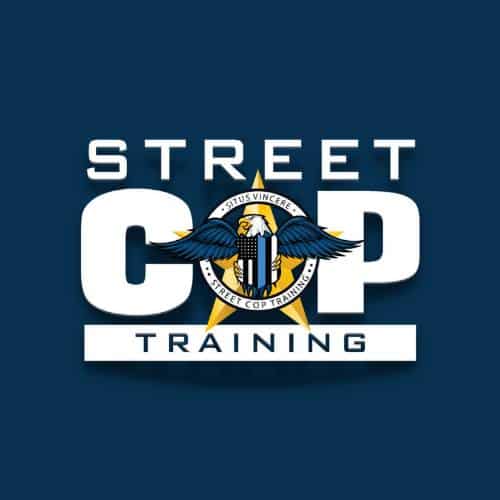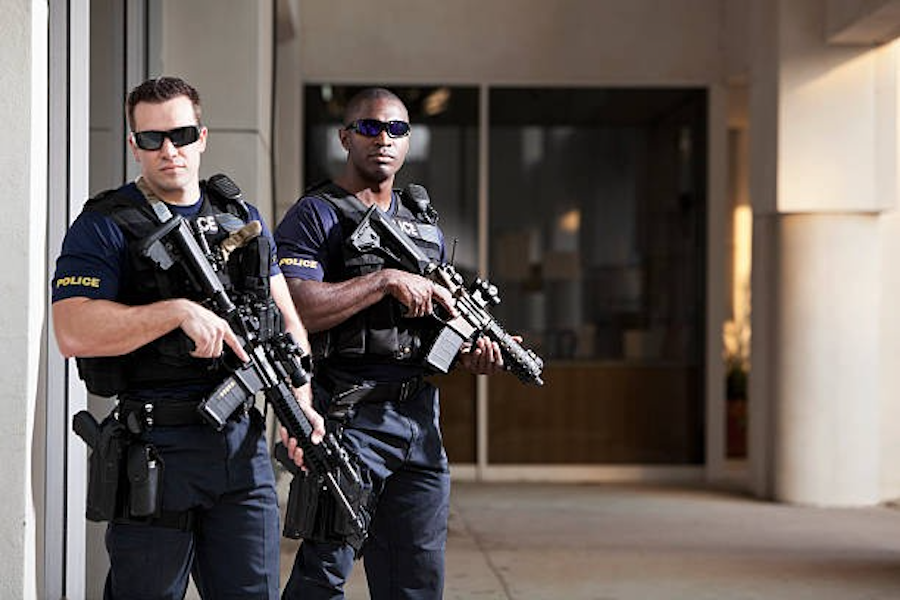
Street Cop Training

It’s Not Just a Gun Necklace
If I were to ask you to make a list of the major tools of policing today I would bet that your list would likely include a radio, handcuffs, taser/oc spray, body armor, a flashlight— or 4, and of course a gun and a holster. Those last two practically go together as one item. There are some crazy policies out there, but so far every policy I’ve seen has some sort of leather or plastic to hold their pistol. If you know an agency going full Yukon Cornelius, I need photos.
We have another tool that has taken a firm hold in this profession that doesn’t seem to receive the same attention as the pistol— the AR-15. We would be creating tremendous issues for ourselves if we just tried to carry around our pistols without a holster, but we tolerate ineffective slings for our rifles, or even no sling at all. The sling is one of the most overlooked pieces of equipment that we can put on our rifles. I would argue it’s as important, and deserves as much consideration, as the light and optic we mount on the gun. The sling isn’t just a piece of nylon we use as a gun necklace so our rifle doesn’t fall when we let it go. It’s a key part of unlocking all of the functionality of our rifle if we have to deploy it.
The first task of the sling most applicable to policing is control of the rifle when not being actively employed. It should keep it secured to our bodies, stable in its stored position, and conveniently accessible in case it needs to be redeployed. We don’t want our rifle falling on the ground if we have to let it go. It shouldn’t be swinging around knocking us in the knees and “sensitive” areas. And we should be able to grab it intuitively, just like drawing your pistol. It should be where you left it. This disqualifies the single-point sling entirely. I understand, there’s still much love for single points. But unless you and your MP5 are guarding The Crown, single points don’t have a place on fighting rifles.
You need your sling to be able to keep the muzzle deflected away from things that don’t need guns pointed at them. Dangling freely isn’t an effective way to make that happen.
If you still have a 3-point sling all I can say is leave that extra material back with incandescent flashlights. Our current evolution of 2-point slings is the optimum solution for weapon control, especially with the on-the-fly adjustability that’s become readily available in the last decade. It allows you to keep the muzzle pointed where you want it if you don’t have a hand on the gun. It protects your knees from front sights and flashlights, and it offers a key advantage when firing the rifle— positional stability.
Some of you familiar with sling-supported shooting are probably imagining gentlemen in funny jackets shooting old wood and iron fighting rifles they likely carried in their youth. Slow cadence of fire, extended ranges, and iron sights, the way God intended(so I’m told). Using a sling to increase the stability of the rifle is a long-standing rifleman skill that applies not only to M1 Garands at 600 meters; the modern patrol officer that locks a carbine in their car on duty can take advantage of the same principles that your local high power shooter does.
There are better men than me like Ryan Cleckner and Kyle Lamb, who have chapters dedicated in their books to sling use. I’ll sum up my article simply. A two-point sling is an enabler that comes at a low cost and is readily available. The VTAC, Blue Force Gear GMT, Magpul MS1, and similar two-point slings have been excellent performers. It’s a low-cost investment that will dramatically improve your rifle shooting. Don’t let your rifle be a forgotten piece of equipment. Give it the attention it deserves.